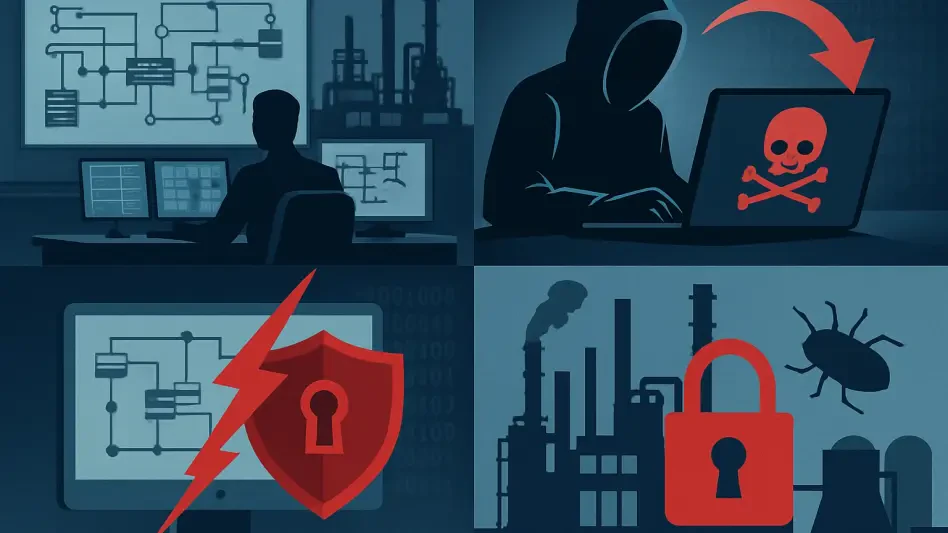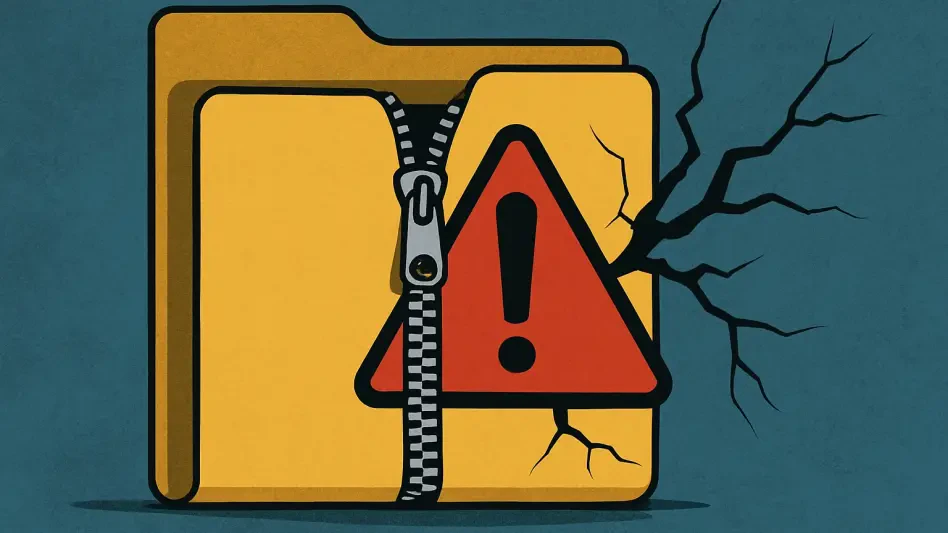In an era where critical infrastructure underpins global stability, a staggering statistic reveals the stakes: a 146% surge in operational technology disruptions over recent years has shaken industries from energy to transportation, highlighting the urgent need for stronger defenses. This alarming trend underscores a pressing reality—traditional security measures are no longer sufficient to protect the intricate web of cyber-physical systems that power modern society. As industrial environments grapple with the convergence of digital and physical realms, the question emerges whether cyber-physical resilience can redefine the approach to safeguarding vital sectors. This report delves into the evolving landscape of industrial security, exploring current challenges, emerging trends, and the potential for resilience to become the cornerstone of future defenses.
Understanding the Current State of Industrial Security
The industrial security landscape today spans critical sectors such as energy, water, transportation, and manufacturing, each forming the backbone of societal function. These industries face unprecedented risks as cyber threats increasingly target operational technology (OT) systems that control physical processes, from power grids to water treatment plants. Protecting these assets is not merely a technical concern but a matter of public safety and economic stability, with disruptions capable of causing widespread consequences.
A significant shift in this domain is the growing integration of OT with information technology (IT) systems, blurring the lines between digital networks and physical machinery. This convergence, while enhancing efficiency, exposes new vulnerabilities, as IT breaches can cascade into OT environments, halting operations or endangering lives. Stakeholders, including OT defenders, engineers, and cybersecurity professionals, are at the forefront of addressing these risks, often collaborating through platforms like industry-focused events to share insights and strategies.
Despite these efforts, challenges persist, shaped by tight budgets and escalating geopolitical tensions. Many organizations struggle to allocate sufficient resources for comprehensive security, while global conflicts amplify the threat of state-sponsored cyberattacks on critical infrastructure. These pressures demand a reevaluation of priorities, pushing the industry toward innovative, cost-effective solutions that balance immediate needs with long-term protection.
Key Trends and Developments in Cyber-Physical Security
Emerging Paradigms and Technologies
The fusion of IT and OT systems stands as a defining trend in industrial security, creating a complex web of interdependencies. This convergence, while operationally beneficial, introduces vulnerabilities that can lead to cascading disruptions, as evidenced by real-world incidents where IT breaches paralyzed manufacturing lines. Such cases highlight the urgent need for integrated security frameworks that address both digital and physical risks holistically.
Emerging concepts like consequence awareness are reshaping the approach to protection, shifting focus from isolated systems to safeguarding operational outcomes. This paradigm prioritizes the continuity of essential services—think uninterrupted electricity or clean water—over merely defending individual components. Additionally, advancements in technology, such as AI-assisted threats and exploitation of industrial protocols, are escalating the sophistication of attacks, necessitating robust countermeasures.
Opportunities for resilience are also arising through innovations like cyber-informed engineering and threat modeling during the design phase. By embedding security into the foundational stages of system development, industries can anticipate risks and build defenses that withstand disruptions. These strategies mark a proactive turn, aiming to fortify critical infrastructure against an ever-evolving threat landscape.
Market Insights and Future Projections
Data paints a stark picture of the current threat environment, with industry reports noting a 146% rise in OT disruptions over recent tracking periods. This surge reflects a growing attack surface as more devices connect to external networks, amplifying the potential for breaches. The demand for specialized OT security roles is rising in response, as companies seek experts who understand both cybersecurity and the engineering nuances of industrial systems.
Looking ahead, projections suggest a steady adoption of proactive resilience strategies and layered defenses between 2025 and 2027. Organizations are expected to prioritize structured approaches that mitigate risks before they manifest, rather than relying on reactive fixes. Collaborative efforts across disciplines will likely play a pivotal role, as cross-functional teams work to align security with operational goals.
Industry events and platforms are anticipated to grow as catalysts for dialogue and innovation in cyber-physical security. These gatherings provide spaces for stakeholders to exchange knowledge, test new technologies, and develop standards that address emerging challenges. As the market evolves, such collaborative initiatives will be instrumental in shaping a more secure industrial future.
Challenges Facing Cyber-Physical Resilience in Industry
Securing interconnected IT-OT environments presents formidable complexities, with visibility gaps posing a significant hurdle. Many organizations lack a clear understanding of their asset inventories, leaving internet-exposed devices vulnerable to exploitation through misconfigured firewalls or legacy access paths. This blind spot complicates efforts to prioritize risks and deploy effective defenses.
Operational obstacles further exacerbate the situation, as outdated hardware and fragmented systems hinder modernization. Limited training for incident response and recovery compounds these issues, leaving teams ill-prepared to manage crises. The cultural divide between cybersecurity and engineering personnel adds another layer of difficulty, with differing priorities often stalling progress under constrained budgets.
Addressing these challenges requires practical steps, such as pursuing incremental security improvements to build momentum. Trust-building initiatives between technical teams can help align objectives, while updated procedures ensure readiness for disruptions. By focusing on achievable goals and fostering collaboration, industries can gradually enhance resilience without overwhelming resources.
Regulatory and Compliance Landscape in Industrial Security
The regulatory framework governing critical infrastructure security encompasses a range of standards and guidelines designed to ensure robust protection. These mandates, often tailored to specific sectors, set benchmarks for cybersecurity practices, compelling organizations to integrate digital safeguards with operational safety and continuity. Compliance is not just a legal obligation but a driver of structured security programs.
However, aligning regulatory requirements with practical, budget-conscious measures remains a challenge. Many industries struggle to meet stringent demands without straining financial resources, necessitating a balance between mandated controls and feasible implementation. This tension underscores the importance of flexible policies that accommodate diverse operational realities.
Collaboration across the industry is vital in shaping future regulations that support cyber-physical resilience. By engaging with policymakers, stakeholders can advocate for frameworks that address real-world constraints while promoting innovation. Such partnerships will be key to evolving compliance into a tool for sustainable security rather than a burdensome checklist.
The Future Direction of Industry Security
A notable shift is underway in industrial security, moving from reactive cybersecurity to proactive, engineered resilience. This transition emphasizes designing systems with inherent defenses rather than retrofitting protections after deployment. By anticipating disruptions during the planning phase, industries can reduce vulnerabilities and ensure operational continuity even under attack.
Emerging disruptors, such as AI tools that lower the barrier for attackers, are reshaping the threat landscape. These technologies enable less-skilled adversaries to exploit weaknesses, while the need for long-term tracking of sophisticated opponents grows. Specialization in OT security roles and early integration of threat and hazard analysis are poised to become critical growth areas in response.
Global economic conditions, talent shortages, and the pace of innovation will also influence the trajectory of industrial security. As organizations navigate these external factors, the focus will likely remain on building adaptable, resilient systems. Investments in education and cross-disciplinary expertise are expected to shape a workforce capable of meeting tomorrow’s challenges head-on.
Conclusion and Strategic Outlook
Reflecting on the insights gathered, it becomes evident that cyber-physical resilience stands as a pivotal element in redefining industrial security. The discussions highlighted the urgency of addressing IT-OT convergence, evolving threats, and operational constraints through collaborative and practical measures. This exploration underscored a collective determination to move beyond traditional defenses toward a more integrated, outcome-focused approach.
Looking ahead, actionable steps emerge as essential for progress. Industries are encouraged to prioritize asset clarity by mapping critical systems and dependencies, ensuring a foundation for targeted protection. Adopting consequence-driven strategies to safeguard operational continuity proves vital, as does fostering cross-disciplinary partnerships to bridge cultural and technical divides. These initiatives promise to strengthen defenses in a sustainable manner.
Ultimately, the journey toward resilience offers a pathway to not only protect critical infrastructure but also sustain global society in an interconnected age. Stakeholders are urged to invest in early design-phase security, advocate for supportive regulatory frameworks, and cultivate specialized talent. By embracing these considerations, the industrial sector can build a future where security and resilience go hand in hand, ready to face whatever challenges lie on the horizon.








